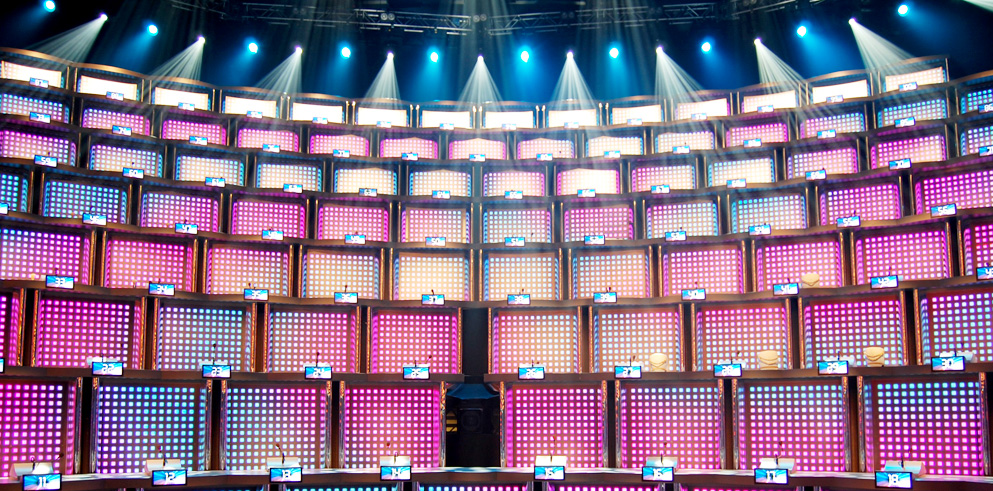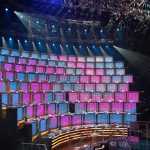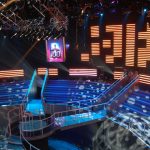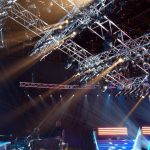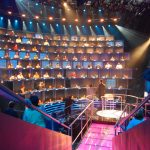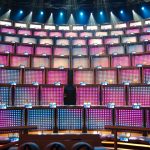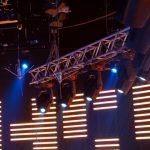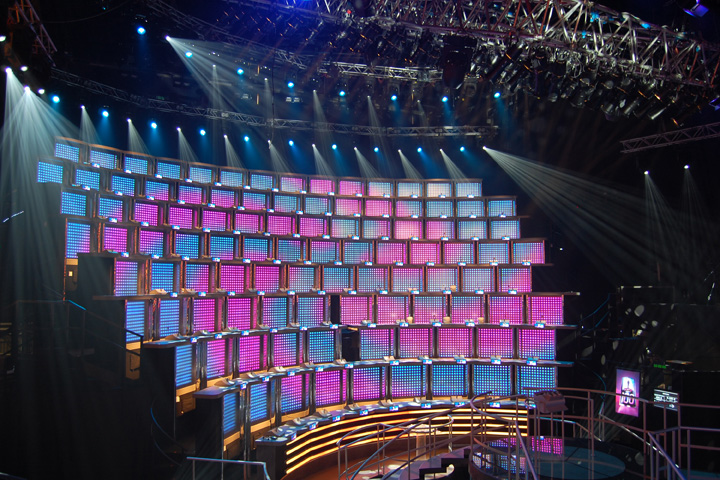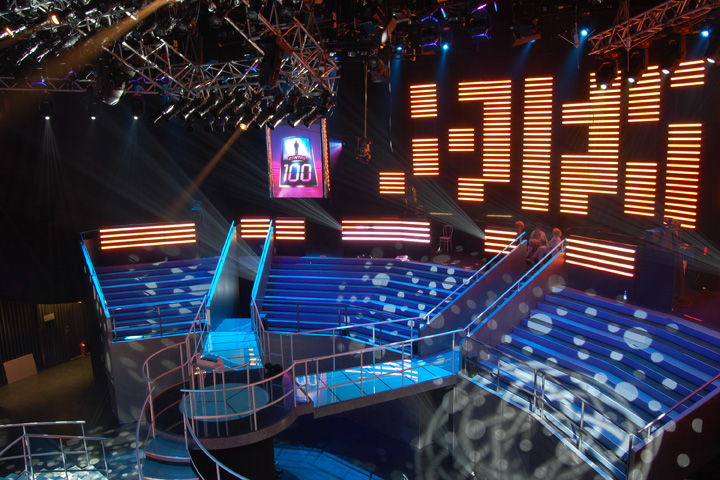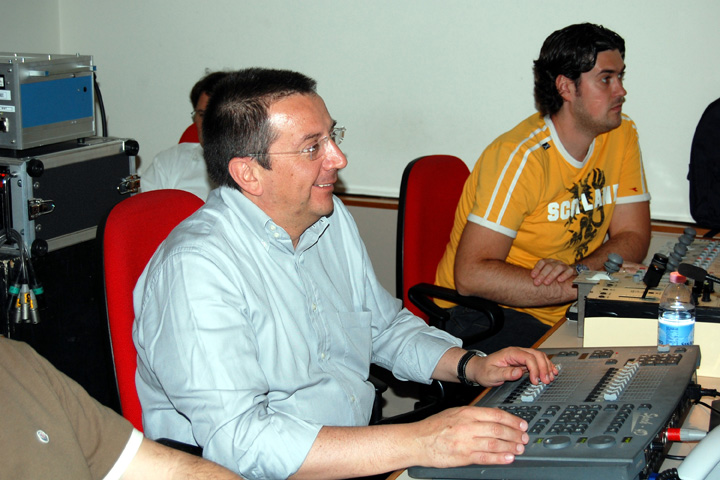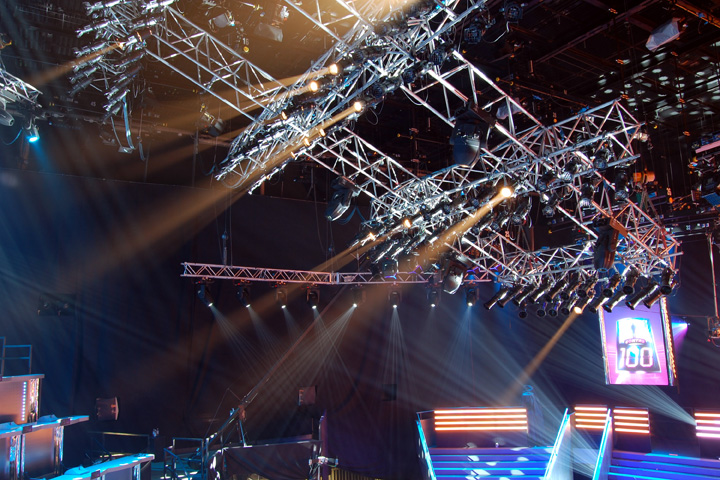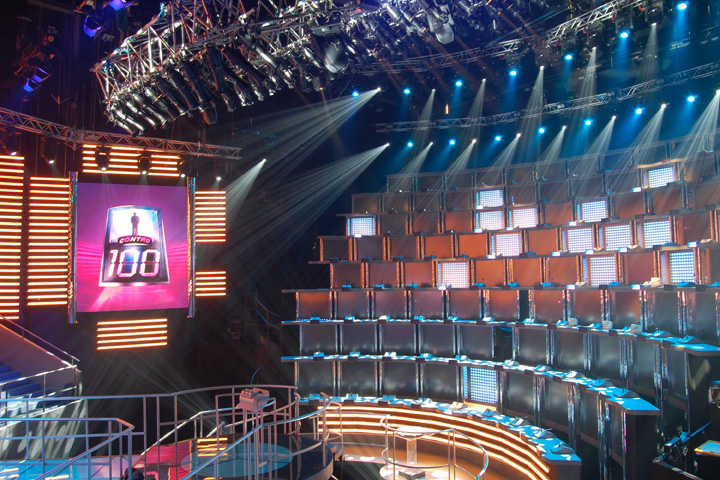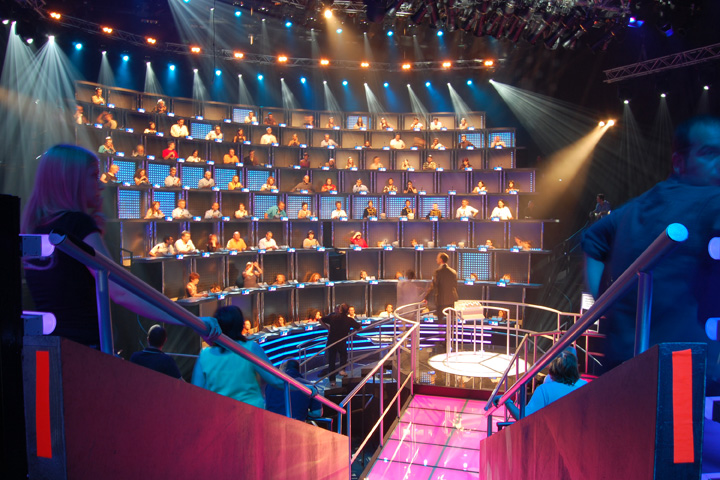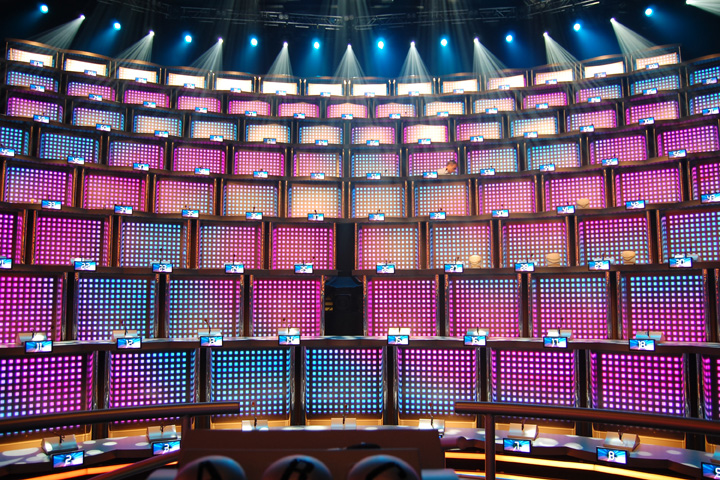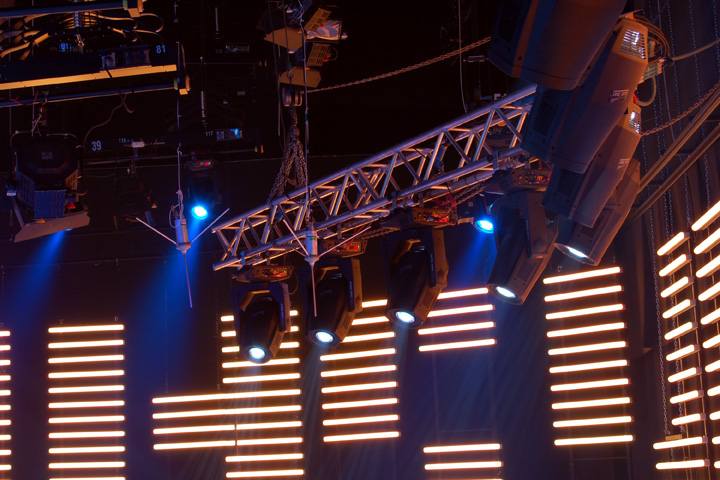A highly successful Endemol/Mediaset production, the TV programme “1 vs. 100” (“Uno contro cento”), which has now come to Italy after winning record-breaking audience shares in the USA, France and Spain.
Riccardo Barbaglio, Director of Photography, describes the type of work done: “As is often the case with formats, there are various “fixed” parameters, from the image of the set to the lights. The work has been to adapt the “spirit” of the programme and a typology of standardised filming to the dimensions of the studio and the means we had at our disposal”.
The first phase was therefore to attentively study the technical light design projects supplied by the production company, and to check the result in the field. To do this, Riccardo Barbaglio and set designer Claudio Brigatti went to Paris at the end of last year to the TF1 studios where the French version of the programme was being recorded.
Compared to the French edition, Mediaset’s studio 11 was greater in height but not as wide. Starting from these considerations, Barbaglio chose the lights, and then designed the lighting. “Taking advantage of the height of the studio, I only wanted to use mobile heads, instead of the scanners used inthe original production : this allowed me to obtain a more complete and versatile lighting, in line with the characteristics of the TV studio where we were working.”
Barbaglio used Clay Paky moving bodies: 16 Alpha Spot HPE 1200, Alpha Wash 575, 10 CP Color MH, as well as about fifty Stage Zoom 1200 and Stage Color 1200.
The projectors were installed on two arches that slid above the wall of the contestants, on two semi-circular trusses at the sides of the position of the host and on the wall behind the audience. Some individual projectors on the ground cut the stage with upward effects: the whole set, the “mob”, the position of the contestants and of the audience are raised a few metres above ground level.
The aim of the light effects is mainly to highlight the stages of the game: giving the right or wrong answer, choosing to play against the “mob” rather than going home with the money won, the 6 seconds the contestant has to answer, the use of the joker and the commercial break stings. For each of these situations, characteristic lighting codes were developed, which immediately identify the stage of the game. The effects, created by the Clay Paky projectors, reinforce that produced by the host’s words and offer the viewer greater emotional involvement.
Barbaglio is satisfied with the work because he has succeeded in obtaining an original lighting design whilst keeping within the limits imposed by the format. “I have always liked the spectacular use of light through using smoke and I had the opportunity for this here, as it is not a classic set design but the combination of technical elements, spectacular element and lights.”
Set designer Claudio Brigatti privileged the architectural solution of the “mob” with strong elements of symmetry and balance with the other elements in the studio. “There is the idea of a wall as the main feature completely enclosing with the “living” studio, so that the audience also take part in making up the show. The host, contestants and audience are united by the circular symmetries of the studio and connected by the changes of light. The Clay Paky projectors, with their originality and the quality of their effects, have been a fundamental partner for the great success of the show.”
The game also required each of the 100 contestants to be lit up individually with a profilespotlight.”Switching on and off these profile spotlights is completely computerized,” explains Barbaglio. “A wrong answer corresponds to automatic switch off, it couldn’t be done manually given the large number of contestants. We worked very hard to get the game software to dialogue with the console, which in turn controls the dimmers.”
The light engineering part was also implemented by the LED walls, which animated the wall and connected the whole of the circular arena with graphic effects, and by a videowall, an integral part of the set and an important “overhead projector” for the visibility of the questions.
Barbaglio had invaluable collaboration from the console operator Andrea Mantovani. Lights service: Xenon. Sound service: Backstage.
